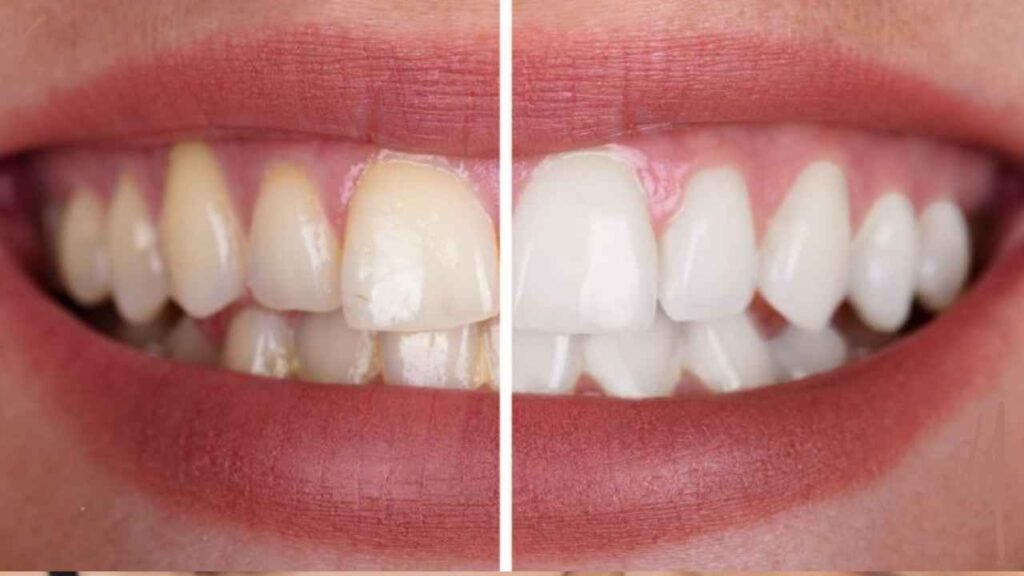Oil pulling has gained significant attention as part of natural health trends, especially when it comes to oral hygiene. This ancient Ayurvedic practice involves swishing oil around in your mouth to promote oral health, and many people claim it helps whiten teeth over time. But can this really be true? Does oil pulling whiten teeth, or is it just another wellness fad?
In this article, we’ll explore what oil pulling is, how it works, and whether it can truly help you achieve a brighter, whiter smile. Let’s break down the science, step-by-step process, and overall benefits of this simple, natural practice.
What Is Oil Pulling?
Oil pulling dates back thousands of years as part of Ayurvedic medicine, a holistic healing system that originated in India. The basic idea is simple: you take about a tablespoon of oil and swish it around in your mouth for 15 to 20 minutes, then spit it out. This act is believed to “pull” out bacteria, toxins, and other harmful substances, helping to improve your overall oral health.
Step-by-Step Guide to Oil Pulling Whiten Teeth
- Choose your oil—coconut, sesame, or sunflower oils are the most common.
- Place about one tablespoon of oil in your mouth.
- Swish the oil around, pulling it through your teeth for 15-20 minutes.
- Spit the oil out into a trash can (to avoid clogging drains).
- Rinse your mouth thoroughly with water and follow up by brushing your teeth.
Oil pulling is simple to practice, but the benefits go beyond just swishing oil. One of the main questions people ask is, “Does oil pulling whiten teeth?” Let’s dive into whether it truly works for achieving a brighter smile.
Does Oil Pulling Whiten Teeth?
When it comes to the question “Does oil pulling whiten teeth?” the answer isn’t as straightforward as yes or no. While oil pulling does not work in the same way as bleaching agents found in commercial whitening products, it can contribute to a cleaner, healthier mouth, which may result in a brighter appearance over time.
Oil pulling removes surface stains caused by substances like coffee, tea, wine, and tobacco. By eliminating bacteria and reducing plaque buildup, oil pulling may help to reveal the natural color of your teeth, making them appear whiter. However, it won’t dramatically whiten teeth the way professional treatments or whitening strips can.
Explore: Best essential oils for inflammation of gums
The Science Behind Oil Pulling
The science of oil pulling suggests that this practice helps reduce harmful bacteria in the mouth, especially those that contribute to plaque and tooth decay. These bacteria often cause yellowing and stains on the teeth. Oils like coconut and sesame are rich in antibacterial compounds, such as lauric acid in coconut oil, which can help improve oral hygiene.
Does oil pulling whiten teeth? In a way, yes, by improving overall cleanliness and removing plaque, which can make your teeth look brighter. But if you’re looking for fast, drastic results, you may want to consider combining oil pulling with other whitening methods.
How Effective Is Oil Pulling Compared to Other Whitening Methods?
If you’re wondering how oil pulling compares to traditional teeth whitening treatments, there are some key differences.
- Over-the-Counter Whitening Products: Whitening strips and gels contain bleaching agents like hydrogen peroxide that chemically alter the color of your teeth. These can offer fast results, but may cause sensitivity.
- Oil Pulling: While oil pulling whiten teeth over time by reducing surface stains, it is gentler on the teeth and gums but will not provide the instant brightening effect that bleaching products can deliver.
- Professional Dental Treatments: Professional whitening treatments at the dentist’s office offer the most dramatic results but are also the most expensive. They can also cause discomfort for some people, especially those with sensitive teeth.

Pros and Cons of Oil Pulling for Whitening
Pros:
- Completely natural, with no harsh chemicals.
- Helps reduce plaque and improve oral health.
- Affordable and easy to incorporate into your daily routine.
Cons:
- Results are gradual, not immediate.
- May not be as effective for severe stains.
- Requires consistency to see noticeable changes.
Types of Oils Used for Oil Pulling
The oils you choose for oil pulling play a role in the effectiveness of the practice. Each oil has unique properties that can contribute to oral health, and they all help in some way to answer the question, “Does oil pulling whiten teeth?”
- Coconut Oil: The most popular choice for oil pulling, coconut oil contains lauric acid, which has strong antimicrobial properties. This helps fight the bacteria responsible for plaque buildup and gum disease.
- Sesame Oil: Traditionally used in Ayurveda, sesame oil is rich in antioxidants and also helps reduce bacteria.
- Sunflower Oil: While not as popular as coconut or sesame oil, sunflower oil is another option that can be used for oil pulling.
Why Coconut Oil Is the Most Popular
Coconut oil is favored in oil pulling because it has a pleasant taste, making it easier to swish around for the recommended time. More importantly, its high content of lauric acid gives it strong antimicrobial properties, which help to kill harmful bacteria in the mouth. This can not only improve oral health but also contribute to making teeth appear cleaner and brighter.
Oil Pulling Whiten Teeth and Overall Oral Health
Beyond potentially helping to whiten teeth, oil pulling offers numerous other benefits for oral health. It can help improve gum health, reduce bad breath, and lower the risk of cavities.
Oil Pulling for Gum Health
Oil pulling is particularly beneficial for gum health. By reducing the bacteria that cause plaque and gum disease, oil pulling can help reduce inflammation and prevent conditions like gingivitis. Many people who practice oil pulling regularly report healthier gums and fresher breath.
Oil Pulling for Plaque Reduction
One of the key ways oil pulling whiten teeth is through its effect on plaque. Plaque is a sticky substance that forms on your teeth when bacteria feed on sugars. If left untreated, it can harden into tartar and lead to cavities and gum disease. By reducing the bacteria that cause plaque, oil pulling helps keep your teeth cleaner and less prone to staining.
How to Perform Oil Pulling Correctly?
To make sure you’re getting the most out of oil pulling, follow these simple steps:
- Choose an oil that suits your preference—coconut oil is a popular choice due to its taste and antimicrobial properties.
- Take about a tablespoon of oil and swish it around your mouth for 15-20 minutes. It’s important not to swallow the oil, as it will be full of bacteria and toxins.
- After 20 minutes, spit the oil out into a trash can. Avoid spitting into the sink, as the oil could clog the drain.
- Rinse your mouth with water, and brush your teeth as usual to remove any remaining oil residue.
Best Time of Day to Practice Oil Pulling
Many people prefer to practice oil pulling first thing in the morning, before eating or drinking anything. This helps to remove the bacteria that accumulate in the mouth overnight, promoting a fresher start to the day. You can also oil pull at night, but consistency is key to seeing results.
Common Myths About Oil Pulling
Despite its growing popularity, there are several myths about oil pulling that need to be addressed:
- “Oil pulling can replace brushing and flossing”: This is false. While oil pulling is beneficial, it should not replace regular brushing and flossing.
- “Oil pulling cures all dental problems”: Oil pulling can help improve oral health, but it’s not a magic solution for serious dental issues like cavities or gum disease.
Conclusion
So, does oil pulling whiten teeth? While it may not provide the dramatic whitening results that come from professional treatments or over-the-counter products, it can certainly contribute to a healthier mouth and cleaner teeth. By reducing plaque and bacteria, oil pulling helps maintain a cleaner, whiter appearance over time. If you’re looking for a natural, gentle way to support your oral hygiene, oil pulling is a simple practice worth incorporating into your daily routine.
FAQs
- How long does it take to see results from oil pulling?
It can take a few weeks to a month of consistent oil pulling to notice a difference in the appearance of your teeth and overall oral health. - Can oil pulling replace brushing and flossing?
No, oil pulling should complement your regular oral care routine, not replace it. - Is oil pulling safe for kids?
Yes, but it’s best for older children who can manage to swish the oil without swallowing. - What are the best oils to use for oil pulling?
Coconut oil is the most popular, but sesame and sunflower oils are also effective. - How often should I oil pull for the best results?
For best results, aim to oil pull daily or at least several times a week.


2 Comments
[…] Explore: Does Oil Pulling Whiten Teeth? […]
[…] Explore: Does Oil Pulling Whiten Teeth? […]